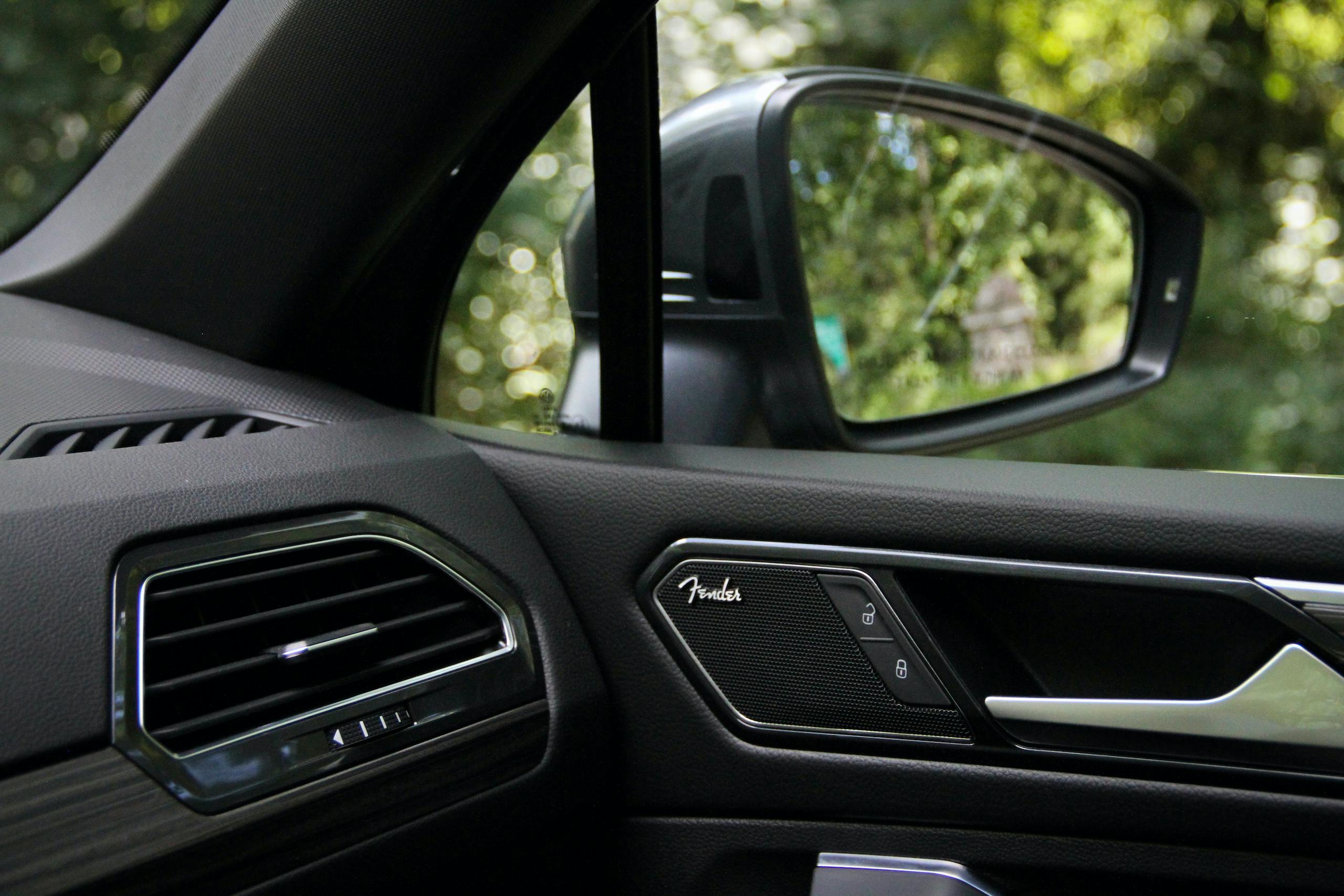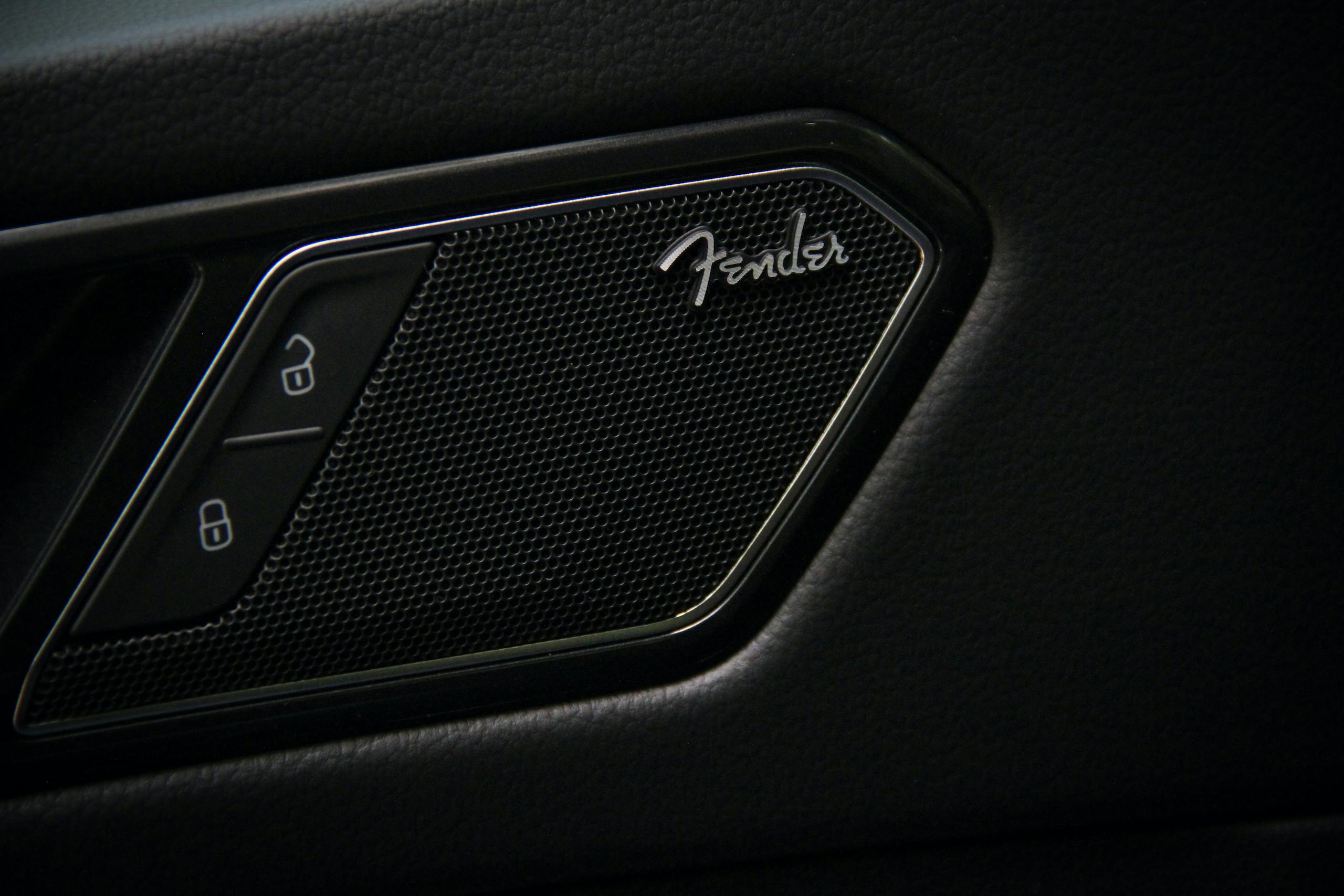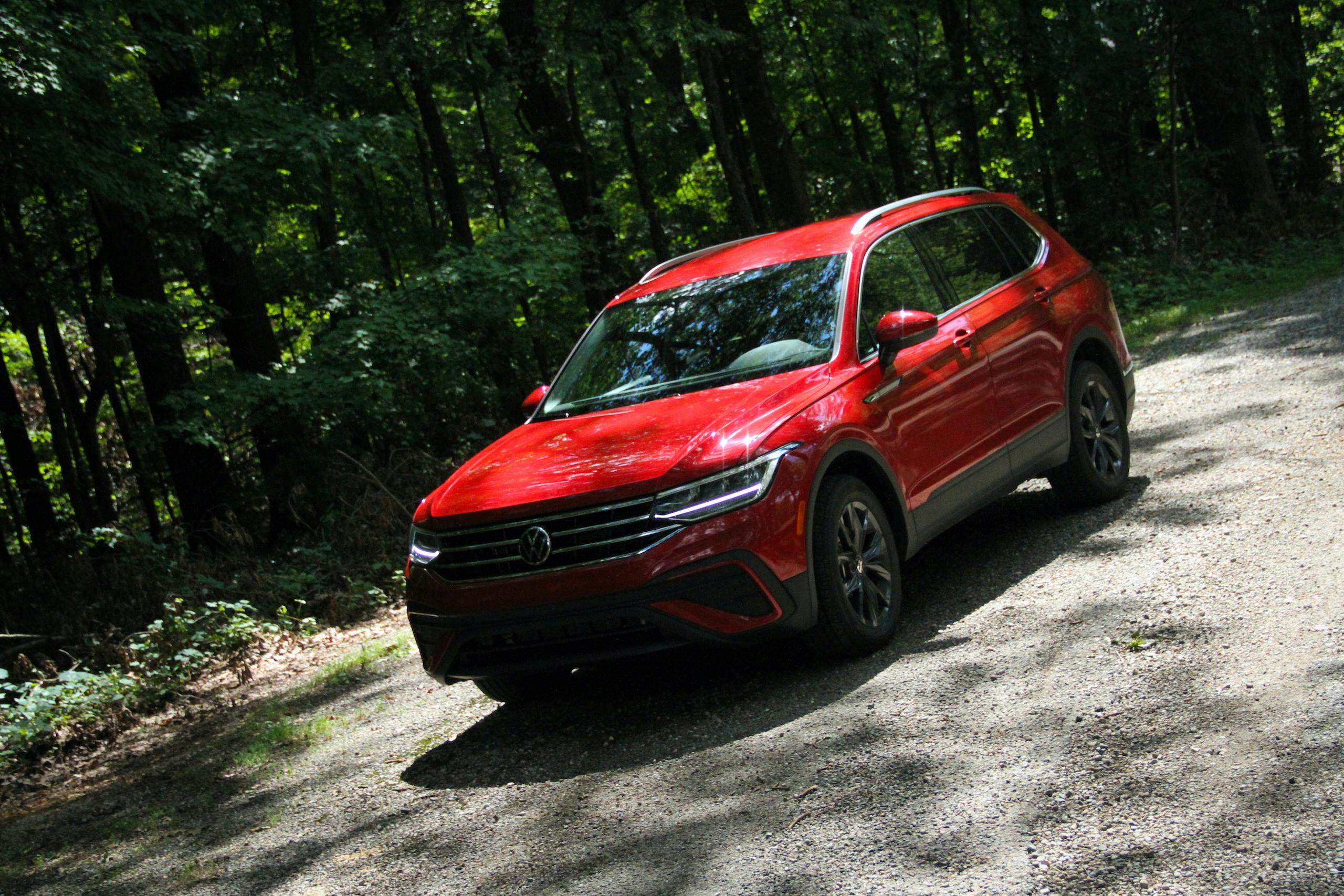First Look Review: 2022 Volkswagen Tiguan SEL R-Line
In North America at least, the Tiguan is the Volkswagen of the modern era. The Golf might still be an icon in Europe, but on these shores it’s not even sold in base form anymore, leaving just the GTI and Golf R. This shift, of course, has been in progress for a while. That VW’s best-selling model in America is a compact crossover should come as no surprise, seeing as Toyota’s RAV4 first eclipsed the stalwart Camry in annual sales back in 2017. In fact, 71 percent of Volkswagen’s entire 2021 year-to-date sales volume consists of SUVs. The second-generation Tiguan is leading that pack ahead of the Taos and Atlas, so it’s a golden goose indeed.
To keep said goose fresh, clean, and competitive, VW tweaked the Tiguan trim structure for its mid-cycle refresh to coincide with some new tech and a fresh front end for 2022. In doing so, Volkswagen culled the SEL trim from the outgoing lineup, leaving the following four offerings: S, SE, SE R-Line Black, and the SEL R-Line (our tester). 2022’s SEL R-Line costs $37,790 including destination ($1195) and comes with a host of standard features: a 10-inch Digital Cockpit Pro infotainment system, crisp-sounding Fender Premium Audio, and newly redesigned 20-inch alloy wheels. For good measure, we made it a point to also jump into a Spartan sub-$30K SE model ($29,495) in order to sample the the optional third row; the primo SEL R-Line (AWD only) won’t be available with an optional third row this year, so only the lower trimmed FWD-possible models get the option.

Underpinning the Tiguan is the same MQB architecture that makes up the Golf, Taos, Jetta, and Atlas. The crossover’s styling remains simple and clean, but the subtle changes for 2022 remind us much more of the larger Atlas Cross Sport than the tiny Taos (That’s a good thing.) Now-standard LED headlights and taillights, combined with an optional illuminated grille, give the Tiguan SEL R-Line an attractive, restrained appeal—at least in the generally ubiquitous realm of compact crossovers. Two new exterior colors enter the fold: a cooler-toned Oryx White and a regal Kings Red. The pronounced character line running from taillight to the front quarter survives as a strong styling trait that the Tiguan and Taos share.
Up against competitors like the Honda CR-V and Mazda CX-5, the Tiguan’s big advantage is its wheelbase: 109.9 inches compared to 104.7 and 106.2 inches, respectively. The interior is roomy and loads of legroom make the second row particularly welcoming upon entry, but things aren’t so cozy in the optional third row. This way-back is fit for two small rugrats in timeout and not much else, with its mere 27.9 inches of legroom. Worse still, the optional third row slashes an additional two inches of legroom out of the second row (from 38.7 to 36.6 inches) and reduces cargo volume (from 73.4 to 65.3 inches). It’s far from ideal, and 40 percent of Tiguan buyers currently opt for the top-trim two-row-only SEL R-Line and its refinements. Ventilated leather seats make a case for the SEL R-Line as well, swaddling and support the driver in a way that the SE’s stiff leatherette simply doesn’t. That said, all trims now come with standard heated front seats, which is a major boon for buyers of the base S model.

The powertrain is something of an old, trustworthy dog lacking new tricks. The turbocharged 2.0-liter inline-four produces 184 hp and 221 lb-ft of torque—nothing thrilling, but nonetheless adequate for the mainstream customer. With a car like this, VW is chasing mpg ratings more than lap times, after all: FWD models will net 26 mpg combined, whereas AWD models hit 25 mpg and the two R-Line Tiguans earn 24 mpg. One clear concession to fuel economy is the definite and frustrating lag from the throttle pedal, which creates a bit of hesitation when accelerating from a stop. This misstep extends even to the supposedly sporty R-Line trims.

Otherwise, the Tiguan hits its marks dead-on. The steering is light but predictable, the brakes are consistent and easy to modulate at parking-lot speed, and it’s easy to see in all directions. Driving an SEL R-Line is comfortable. Relaxing. This car would do just fine traveling across Midwestern state lines without the need for rest-stop yoga breaks.
The Tiguan’s touch-sensitive interface however, is frustrating enough that we’d advise a bit of deep breathing and meditation before first use. Capacitive buttons in the SEL R-Line are a chore to use, requiring the user to double-check if the haptic responses don’t provide affirmation, or more often, if the correct button was pressed. I’m no fat-fingered technology dinosaur either, but as it stands, there’s still nothing deliberate about them. This is the type of technology that looks good when the car is on the dealer lot, in Park, but becomes a lot more annoying when you actually have to use it on a busy day when other life minutiae demands your valuable attention. Case in point: When Touch ID doesn’t register on an iPhone, you look down. When capacitive buttons don’t in a car, you take your eyes off the road. The Tiguan S and SE avoids this issue by using traditional analog buttons, at least on the steering wheel, but this alone may be a reason for many drivers to forgo higher trims. The SEL R-Line’s 10.3-inch infotainment screen, at least, retains two tangible control knobs for power, volume, and the like; a small slice of redemption for those of us irked by the setup in the new Mk8 GTI.
Audiophiles will approve of the Fender eight-speaker sound system, which includes a subwoofer located in the trunk and integrated into the spare tire. We found the balanced system outclasses the Beats Audio arrangement in the smaller Taos. (A moderate improvement in road noise insulation over the Taos SEL helps, too.)
The Tiguan remains popular for its do-it-all utility and more-attractive-than-it-costs curb appeal. Volkswagen should sell a boatload of these, especially given the competitive pricing and equipment. There’s a hell of a lot of value to go around in the lower reaches of the model, but opting up into the SEL R-Line rewards spenders with a palpable air of comfort, despite the challenging UX shortcomings. The Tiguan nails a fundamental size sweetspot; many families will never outgrow it, but it’s not so large that others won’t grow into it.

Toyota’s more powerful RAV4 and Honda’s eco-friendlier CR-V still maintain strong footholds over the market. Things get murkier still when you consider the role of the Taos in the family. At 105.9 inches long and a price of $35,440 fully loaded, it’s arguably stiffer competition for Tiguan buyers who don’t need a ton of space. Of course, if having too many SUVs is any kind of problem, it’s a good problem for VW to have.
2022 Volkswagen Tiguan SEL R-Line
Base Price/As Tested: $27,190 / $37,790
Highs: Sharp design, plenty of space, and features befitting a pricier vehicle.
Lows: Touch sensitivity controls aren’t friendly on the fly. R-Line “sportiness” is more flair than substance. Throttle could be more responsive.
Summary: The Tiguan is evidence that VW finally knows what U.S. buyers want. Subtle but conscientious changes for 2022 should keep the golden-goose crossover competitive for at least a few more years.




































